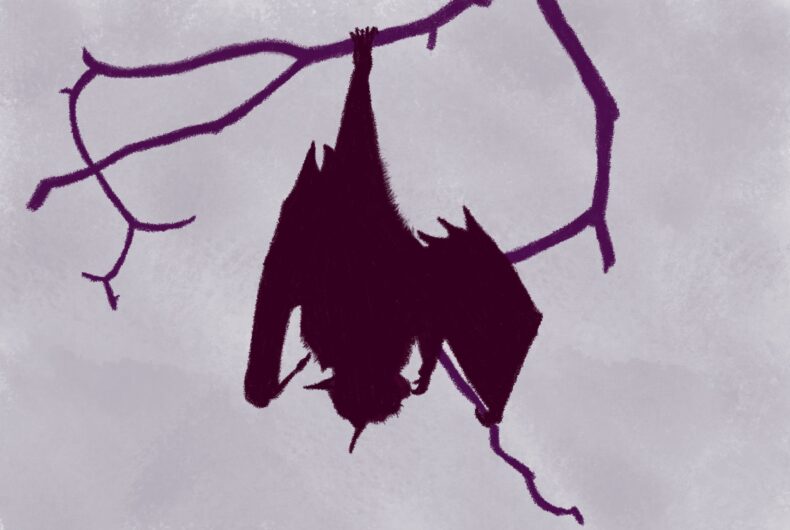
Note: This is a personal essay that happens to include a lot of neat facts about bats. It should not be confused with Our Helen’s excellent 2017 post of the same name. I suggest reading both; there’s no such thing as too much information about bats. The facts and statistics in this piece are accurate as of 2022.
The world’s smallest bat is the size of a dandelion puff and weighs less than a penny. The largest bat is probably not something you want to think about.
They get pretty big.
Scientists have recorded more than 6,000 mammal species on this earth. Of those, about 1,400 species—or 1 in 5—are bats.
It is wonderful and also not fair that bats are a Halloween animal. Wonderful because bat wings are the perfect shape to carve into a pumpkin’s ribbed rind. Not fair, because they are not monsters.
Everyone remembers Count Dracula turning into a bat. We forget that, just as frequently, he transformed into a giant wolf and a thick, oozy fog. He also scurried vertically up the stone walls of Castle Dracula like a lizard in a Miami motel room. But this is a funny image, a goofy and nonthreatening one, and so it slips our minds.
Some bat species pollinate flowers. Many butterflies drink blood (and urine, and sweat, and tears, and the liquefying flesh of rotting bodies). And yet to humans one of these animals is lovely, and the other the embodiment of everything we should fear.
Baby bats in Costa Rica learn to talk by babbling, like human infants do. “They just babble away, sunrise to sunset, practicing their sounds,” biologist Ahana A. Fernandez told the BBC. The noise, she says, often begins with just one precocious chatterbox. “He babbles for 15 minutes or so, and I can clearly see the ears of the other pups moving…I think they’re really listening to each other.”
How could anyone learn this and not want to protect them?
No bat sucks blood. Their jaws are too small, their mouths not shaped for it. The few bat species that do feed on blood lap it up delicately, like kittens at a dish of milk. And they almost never bother with humans.
A male vampire moth, on the other hand, can and will suck human blood for up to 50 minutes.
A pet name I wish someone would call me: Fang.
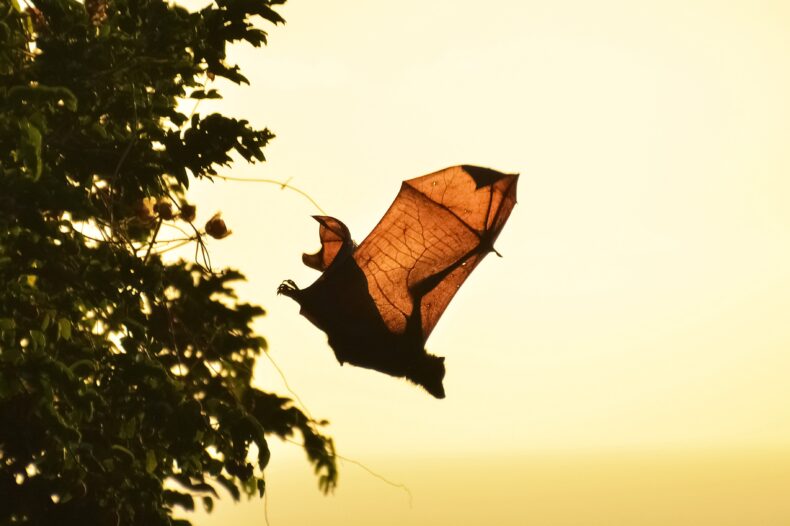
Pipistrellus nathusii, Nathusius’ pipistrelle, is a tiny, polite European bat. The opening call in a P. nathusii courtship conversation includes a greeting, followed by the speaker’s sex: Hi, I’m Max. My pronouns are he/him. Then their geographic location. I’m near the big oak tree. Then the invitation. You should come hang out.
One adult Nathusius’ pipistrelle weighs as much as two teaspoons of sugar. A pair of pipistrelles could curl up in the bowl of a ladle. Four would fit comfortably inside one of my slippers.
I don’t know what my pronouns are. I wish I didn’t have to. On surveys my gender is Prefer not to answer.
I am a woman-looking animal and so people call me her and while that doesn’t feel right, it’s still closer than anything else I’ve come up with.
I wonder if I’d feel differently about it if I was a bat.
“I want to know what it is like for a bat to be a bat,” philosopher Thomas Nagel wrote in 1974.
Nagel’s bat was simply a stand-in for all living beings outside oneself; his real question was whether it is possible for anyone to ever truly understand another’s experience.
His conclusion: it is not.
“It will not help to try to imagine that one has webbing on one’s arms,” Nagel clarified, “…and spends the day hanging upside down by one’s feet in an attic. In so far as I can imagine this (which is not very far), it tells me only what it would be like for me to behave as a bat behaves.”
“Even if I could by gradual degrees be transformed into a bat,” he continued, “nothing in my present constitution enables me to imagine what the experiences of such a future stage of myself thus metamorphosed would be like. The best evidence would come from the experiences of bats, if we only knew what they were like.”
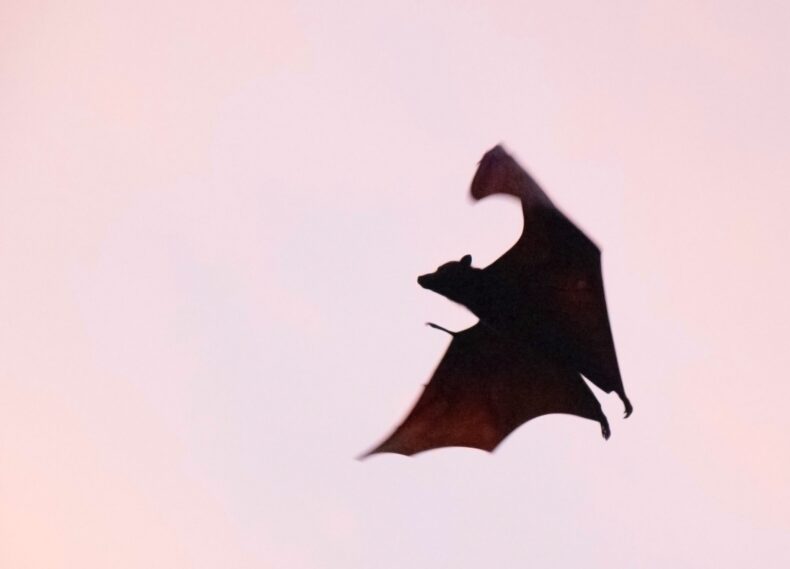
If there ever was a way for bats to sit us down and tell us everything, they’d do it. Bats are chatty.
Researchers recorded the ruckus inside bat colonies and found clear subtypes of noisy conflict. The four most common were “feeding aggression,” which they defined as “quarrelling over food”; “mating aggression,” (“protest of females against males’ mating attempts”); “perch aggression” (“face-to-face aggressive display, where the two bats perch in close vicinity”); and “sleep aggression” (“squabbling in the sleeping cluster”).
“Mating aggression” strikes me as a strange way to describe the sound an animal makes when another animal is trying to violate its body.
But maybe I shouldn’t be surprised. If we speak up, we are aggressive, looking for attention, trying to ruin someone’s life. If we say nothing, then it couldn’t really have been that bad. Probably it never really even happened.
It can be tempting to agree and go silent. Especially when it’s hard to remember the details.
Bats have excellent recall. Unlike humans, whose ability to make and retain memories depends on getting enough high-quality rest, hibernating bats can withstand months of uneasy sleep and still emerge with recollections of what happened before they went under.
I think it’s probably pretty hard to be a bat.
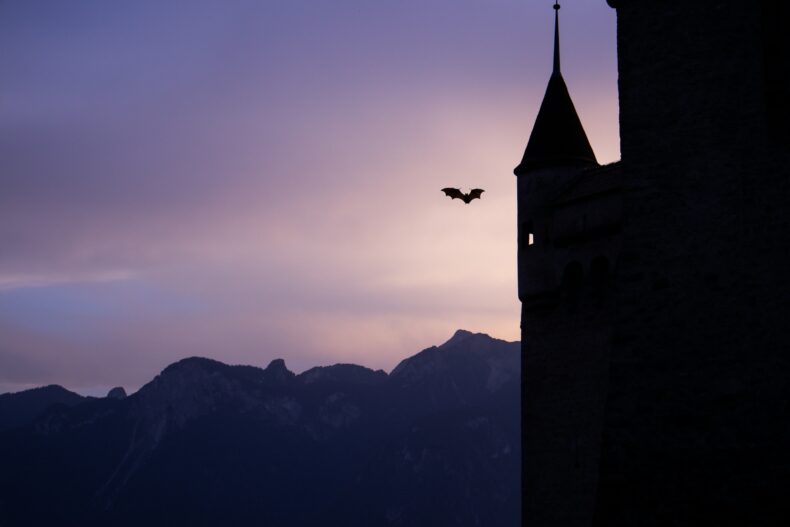
Folklore from at least four continents says that a bat flying over or into your home is a bad omen. A bat in the house means someone inside is going to die, or be lost, or lose a fortune. Lose something.
One year on Boxing Day the man I was dating found a bat hibernating in his attic. He texted me a photo of the drowsing animal nestled in a cardboard box. You want it? I laughed with delight. You know Christmas was yesterday, right? I hurried to his house after dark and gleefully helped him release it. The day before, he’d pretended that he’d forgotten to get me a Christmas present, because he always thought it was funny to hurt my feelings or scare me and then say I’m just kidding!
He lost me three weeks later. The bat had nothing to do with it.
We are programmed by capitalism and white supremacy and the Bible to believe that sunlight and whiteness and early risers are pure and virtuous and responsible, while nighttime and darkness and nocturnal animals are sinful, monstrous, and perverse.
I was born nocturnal.
I still am nocturnal, or would be, if it weren’t for all the medications. Two to make me sleep at night. Three to wake me in the morning. Sometimes I wonder what it would be like if I could just let my body be. To rest and rise in my natural rhythms and still be able to carry out my responsibilities in this world. To sleep through the morning, rise in the afternoon, then work, then play. Go for long walks late at night.
People who fear bats worry that the bats will fly directly at their heads and get tangled in their hair. There’s almost no chance of this actually happening. Bats are generally too good at echolocating to blunder into us by accident, and they’d have to be extremely desperate to approach a human—a hulking, unpredictable animal—on purpose. Some historians believe the hair-tangle myth was intentionally invented to frighten women into staying indoors after dark.
In Cuba, boa constrictors slither onto the ceilings of caves where bats are sleeping. The snakes dangle themselves across the cave’s open mouth like a heavy beaded curtain. At sunset the bats awaken and flap toward the entrance, where they are snapped out of the air before the night breeze even reaches their faces.
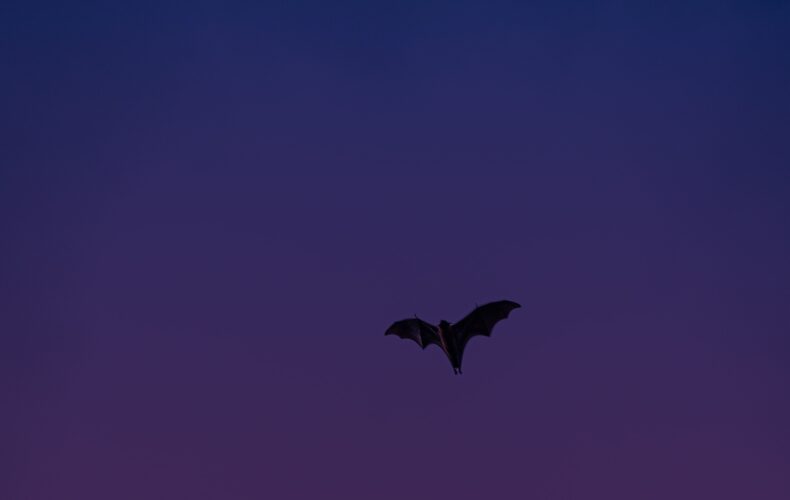
For ten years I lived in a place where it was not safe for woman-looking animals to be on the street alone after sunset. Over time, the danger stretched and expanded. Even daylight walks grew riskier. I lived through months when it was not safe for woman-looking animals to close their eyes and rest in their own beds at night. It was not safe for them to go out, and it was not safe for them to stay home.
I acknowledge the hypocrisy of casting boa constrictors and men as bad guys while complaining that bats get a bad rap. If I were here trying to restore the reputation of mosquitoes, then, yes, the bats that eat them would be the villains.
It’s not that there has to be a bad guy, per se.
It just seems like there always is.
I relocated. Hundreds of miles away.
Things are so much better now. But there are bad guys here, too.
Earlier this year a Nathusius’ pipistrelle flew 1,200 miles from London to a village in Russia, where she was mauled on arrival by a housecat. The man who had originally tagged the bat in England called the discovery of her small carcass “very exciting.”
If the bat said anything, no one heard her.
*
Drawing by me; photos from Unsplash. A version of this essay first appeared in A Velvet Giant in 2022.
Kate,
A very young man who loved me over twenty years ago once looked at a short essay I’d written about us going for a swim in a cedar creek. He set down my pages, and sighed, and all he could talk about was my ambivalence or indifference towards him, something he hadn’t felt in real life till that moment when he read my description of that swim. I wrote about standing in the water, looking at him on the bank. He was lovely & astute. He had curly brown hair and greenish-blue eyes.
I bring this moment in my life up, Kate, because your writing reminds me of the ways in which we can hide in life but not on the page. Somehow, our fear, our loneliness, our courage, and curiosity (which at first I wrote as couriosity as if inquisitiveness rides with an absolute form of courage when we write) comes out in our journals, and the essays we write later about events that happened long ago, even when those essays are about bats, or other animals, former lovers, former apartments. Those thoughts and feelings come out when it’s safer to acknowledge them, long after we’ve left that apartment, said “No More” to that husband or wife.
I want to go back to those moments when we were safe but didn’t know it. I was very safe with my young swimmer. That day, he did come in the water with me, but maybe not all the way, and maybe with more clothes on than I would have liked. The indifference or ambivalence he read in my pages was really not directly about him but about something else, something inside me present only because I let him come so close.
Thanks for your essay, Kate!
Thanks so much for reading, Rachel, and I’m glad it resonated. Sharing personal writing with people in our lives can be a special kind of floor-drops-out-of-the-stomach nerve-wracking. And yes, sometimes (often)(most of the time) it’s much, much easier to see the truth in the rearview mirror.
There are so many things that I love about this piece, Kate… not the least of which is the thought of baby bats babbling. Also the gentle prompt to consider who we are, inherently, before we began to bend and fold ourselves into fitting in all the ways society currently expects from us. I too would like to know how it is for a bat to be a bat… I would like to remember to be more curious about how it is for anyone to be themselves. Perhaps after today I will find that bat sightings are a good reminder to stay curious.
It brings me joy to lay on my lawn in the evenings and watch the bats come out.
Thank you so much, Megan. I love the thought of you there in the grass, the little wings zooming overhead. Such a beautiful moment of grounding and connection to the world and creatures around you. Please tell the bats I said hi.
Some years ago we had a “China Doll Tree” in a pot inside. It was a few feet tall with pleasant little clusters of delicate leaves. At some point on a whim we planted it outside. And it grew. And grew. When it reached over the neighbors 2 story house, it began to produce these amazing 6-9 inch long tubular flowers which would open for one night each, fill the air with a beautiful scent, and positively rain sap down on the deck.
Then we noticed the bats. It turns out that the China Doll Tree is bat pollinated. To encourage this, the tree profers up a delicious sticky sweet treat. And the bats, perhaps seeking to augment their meal with a little more protein, lowered our local mosquito & moth population. It was wonderful. Bats are amazing!
I love that story, Dr. D. Nothing like a good, long-term good story.
Oh my goodness. The gifts just keep on giving.
I, linguist, former editor, survivor of others’ actions, woman-shaped EDS zebra, and curious neurodivergent curiosity, resonate in many ways with this essay, which is captivating at every turn and edited to perfection. I don’t even know what to say except this:
1. I love baby bats babbling. I looked up YouTube videos of the sounds they make and it’s adorable, like piglets.
2. I have scorned “girly” things since I was about 6; butterflies only captured me after I found out about mud-puddling. Other fascinations include black cats (who always seem to be the cuddliest) and octopuses (who look like threatening aliens but are intelligent, social, and playful). There’s something about cute things being dangerous or dangerous-looking things being sweethearts that sees me like a mirror image. It may be time to add bats to my list of favorite animals.
3. Tamsyn Muir, author of an excellent series about lesbian necromancers in space, writes in an interview with Nightmare Magazine:
“I don’t believe in rape as a permanent narrative disfigurement that someone else is able to inflict, and I don’t like rape as a narrative shadow touching someone’s life forever.”
How had I never heard of this concept until my 30s? Is it because of the influence on our culture of the Bible, the patriarchy, both? Questions that will never be answered.
Thank you for such a beautiful, thought-provoking, intuitive essay.
EMF, I’m so glad you’re here, and so appreciate your thoughts. There’s no non-tacky way to say this, but if you haven’t yet subscribed to my newsletter (katehorowitz.substack.com), I think you might enjoy it. I’ve got a mini-essay in this week’s upcoming issue that touches on some of these themes.